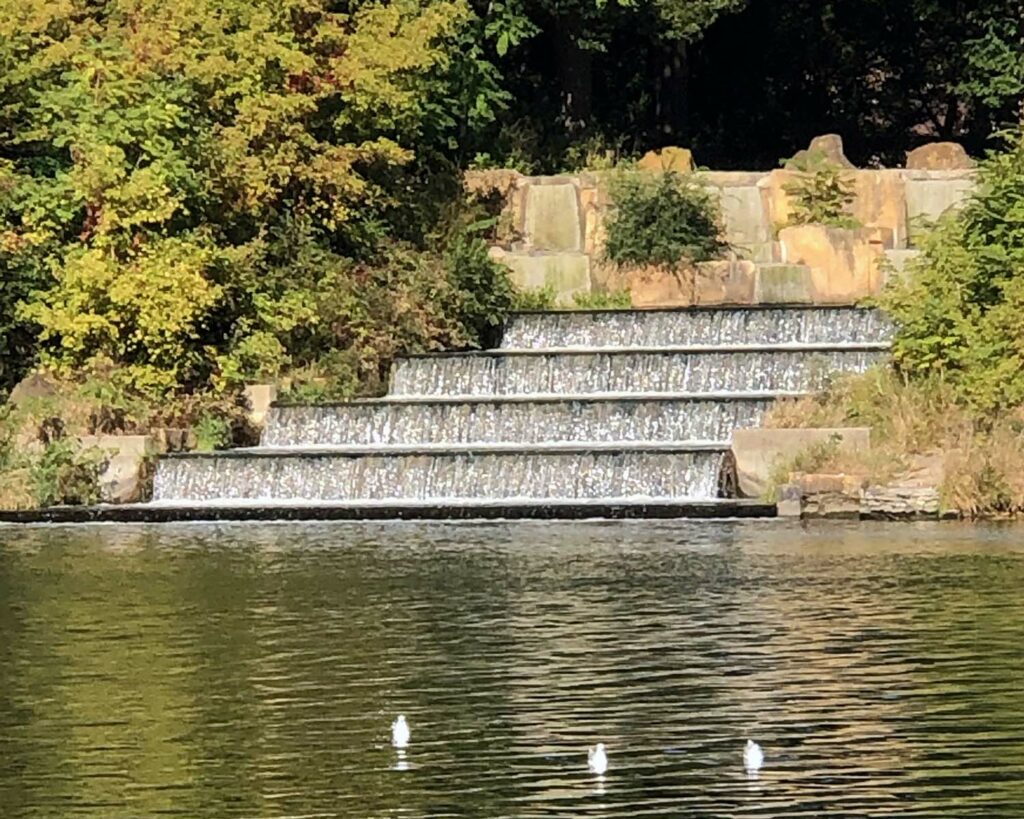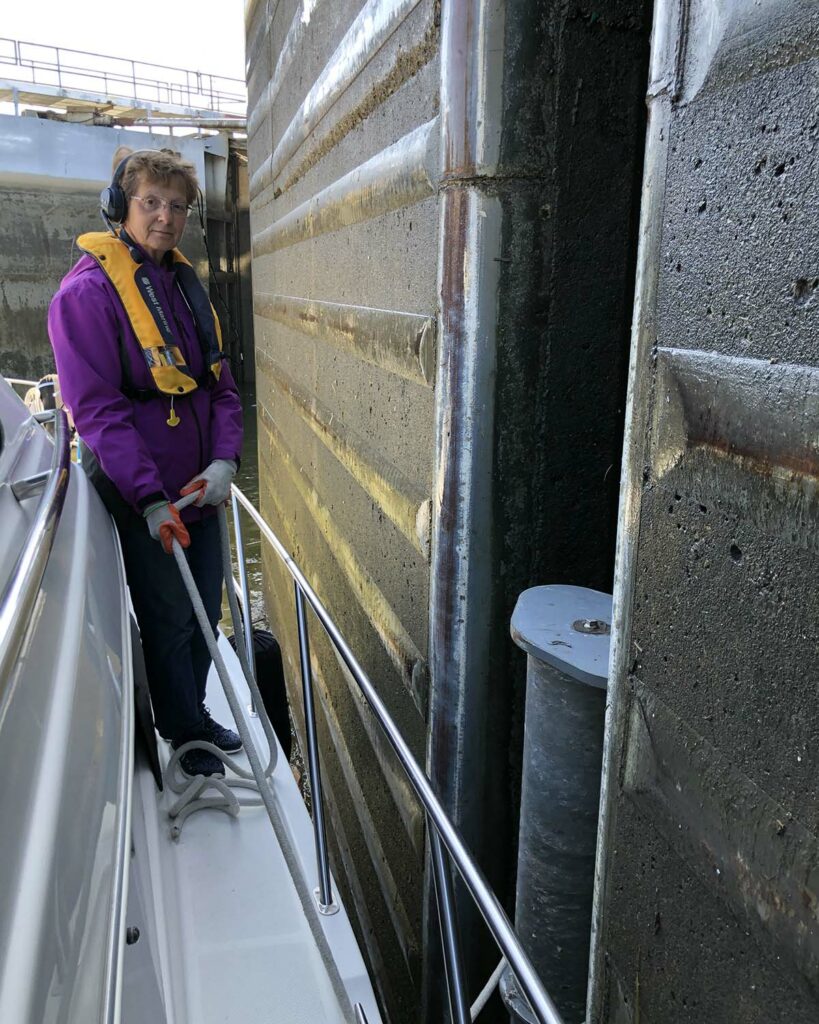Loopers leaving Chicago have a choice of two routes. The first is to go thru downtown Chicago on the Chicago River and then meet up with the Chicago Sanitary and Ship Canal. There is a fixed bridge of 17’ on this route. If your boat can’t get under it, you must go to the alternate route of taking the Calumet River to the Cal-Sag Channel (Calumet-Saganashkee) and then meet up with the Chicago Sanitary and Ship Canal. Eight of the 10 Two-per boats were taking the alternate route. The other two boats went thru Chicago and joined the group when we got into the Ship Canal. We left early morning and it looked like a floating armada as we left Hammond Marina.

The “Two-pers” leaving Hammond Marina.
Our route took us thru a commercial area. There were parked barges and boats on either side of the waterway we were traveling. This presented a rather interesting ride – something like a flume ride at an amusement park. As the first boat went thru, their wake didn’t have to travel far before it hit the parked barges on either side of us. That wake hit the boats and bounced back, hitting the second boat. This multiplied as each boat’s wake bounced back. This stretch of waterway is commonly referred to a “12 Miles of Hell.” We were boat four, and we bounced around like a toy boat in a choppy bathtub. We were just glad not to be boat number ten!

Wakes from each boat bounce off the shore sides and hit the boats following behind.
Much of the scenery on the early part of this trip is very industrial, but even some of the “industrial” aspects were “pretty” to see. There are some water run off units that looked like waterfalls.

Industry along the way. 
Water run off looks like waterfalls.

This is the point that the two routes converge.
At mile 297, there are warning signs for an Electric Fish Barrier. Designed to keep the Asian Carp from getting into the Great Lakes, this electrified barrier is approximately 1 mile in length. Fish entering the barrier are exposed to an electric shock, which keeps them from swimming thru. Boats have to be careful going thru this area as the electric “shock” can also fry boat electronics. We turned off all the electrical equipment that we possibly could and still keep the boat running. Then we held our breath and kept our fingers crossed. Whew – made it thru without incident!

Fish AND boats need to heed the warning!
On the other side of the barrier, we started looking for the Carp. From what we had been told, the fish are frightened by boats and they jump high out of the water, sometimes jumping into boats. Ed, joking, told our fellow boaters that he had the grill lid off and the grill hot – hoping that those fish would jump right onto the grill! Well, guess it was too cold for the fish to be out. Other than a few splashes on the surface of the water, we didn’t see much!
We continued our ride towards the first lock – Lockport Lock and Dam. We arrived a little after noon, but had to wait for the two boats that had come thru Chicago. The Lock Master wouldn’t let anyone in until all boats were in sight. It didn’t take long. This was our first river lock. It was BIG. The inside of it is 110 feet wide by 600 feet long. There weren’t enough bollards (what boats tie to) for each of us, so we had to raft boats together. After we were all tied, only the people on the boats against the wall had any work to do. Everyone else got to walk around their boats and enjoy the ride!

Waiting for the bridge to open.

Rafting together in our first lock on the river.

SOMEbody has to do the work! 
Right door of the lock opening.
Shortly after exiting the lock, we encountered our first moving barge. Over the radio, we heard our “leader” radio the barge captain. He told the captain that there were ten boats approaching. The captain told him that we should pass on his One. River captains use the “lingo” of passing on the One or the Two. Picture a clock. The 1 is on the right side of the center 12. The 11 – or what looks like a Roman Numeral 2 – is on the left side of the center 12. So, when a captain says pass on the 1, we pass on the right. If the captain says pass on the 2, we pass on the left. This dates back to the river boat days when the only communication was by whistle. They used one whistle or two whistles. During the days when we were at AGLCA meetings and people were talking about passing barges, some that were over 1000 feet long – I thought to myself….we will NEVER pass anything that big. Well, here we were. Perhaps it was best that we were with the group. We just followed the boats ahead of us and before we knew it, we were past that big barge!

Passing our first barge.
We continued that day to Joliet, IL. That wonderful city had a free wall, WITH electricity where we were all able to find a spot to spend the night. A few of us walked across the bridge to explore town. Later in the evening we gathered in an adjacent park to enjoy cocktails and recount the experience of the day. Day One on the River for the Two-pers: A Success!

All is quiet at sunset on the Joliet Wall.

Wow and double wow! The sunset at Joliet Wall is breathtaking. I do not think I would have the courage to pass through the electric fish warning. Y’all are brave. I always wondered what those barges looked like and how big they are. Just an amazing adventure and love seeing and reading everything.